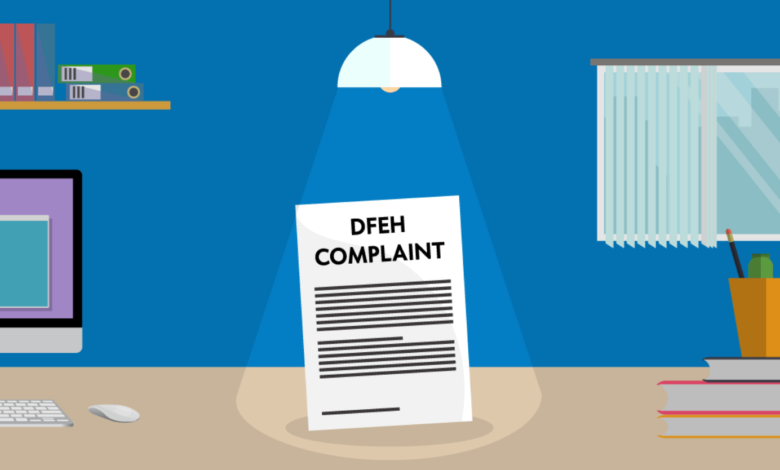Navigating the Complaint Process: Filing a Workplace Discrimination Claim in San Jose

Workplace discrimination can be a deeply distressing experience, affecting both your professional and personal life. Fortunately, California offers robust legal protections for employees facing discrimination. If you believe you’ve been discriminated against based on race, gender, age, disability, sexual orientation, or other protected characteristics, filing a formal complaint is an important step toward seeking justice. This article explains the process of filing a workplace discrimination claim in San Jose through the California Department of Fair Employment and Housing (DFEH) and the Equal Employment Opportunity Commission (EEOC). Consulting with a San Jose workplace discrimination attorney can also help you navigate this complex process and protect your rights.
Step 1: Understand Your Rights and Legal Protections
Before filing a discrimination claim, it’s important to understand the laws that protect you. Under both federal and California state law, it is illegal for an employer to discriminate against an employee based on the following characteristics:
- Race or ethnicity
- Gender or gender identity
- Sexual orientation
- Age (40 or older)
- Disability (mental or physical)
- Religion
- National origin
- Pregnancy
- Marital status
In California, the Fair Employment and Housing Act (FEHA) prohibits workplace discrimination, while Title VII of the Civil Rights Act of 1964 provides similar protections at the federal level. Additionally, the Americans with Disabilities Act (ADA) and the Age Discrimination in Employment Act (ADEA) are key federal laws that protect employees with disabilities and those over 40, respectively.
If you believe you’ve been discriminated against, gathering evidence and filing a formal complaint with the DFEH or EEOC is the first step in holding your employer accountable.
Step 2: Gather Evidence and Documentation
Before filing your complaint, it’s essential to gather evidence that supports your discrimination claim. Documentation is crucial in strengthening your case. Keep records of the following:
- Incidents of Discrimination: Write down specific details about the discriminatory actions or behavior, including dates, times, locations, and the names of individuals involved.
- Written Communication: Save emails, text messages, or memos that indicate discriminatory treatment or policies.
- Witnesses: If any colleagues witnessed the discriminatory actions, ask them if they would be willing to provide testimony or a written statement.
- Performance Reviews: If you were unfairly disciplined or received poor performance reviews due to discriminatory reasons, keep copies of those documents.
A San Jose workplace discrimination attorney can help you review and organize your evidence to ensure your case is as strong as possible.
Step 3: Filing a Complaint with the DFEH
In California, most workplace discrimination claims are filed with the DFEH. The DFEH is responsible for enforcing state laws related to discrimination and harassment in employment. To file a complaint, follow these steps:
- Submit an Intake Form: Visit the DFEH website to complete an intake form online. This form will ask for details about your employer, the nature of the discrimination, and any evidence you have. Be as thorough and detailed as possible when filling out this form.
- Wait for DFEH Investigation: Once your intake form is submitted, the DFEH will determine whether to investigate your claim. If they decide to move forward, they may initiate an investigation, attempt mediation between you and your employer, or issue a “right-to-sue” notice.
- Right-to-Sue Notice: If you wish to file a lawsuit in civil court, you must first receive a “right-to-sue” notice from the DFEH. This notice allows you to proceed with your case in state court. You can request this notice immediately when filing your complaint or wait until the investigation concludes.
- Mediation: In some cases, the DFEH may offer mediation as an alternative to a formal investigation. Mediation allows both parties to resolve the dispute without going to court. However, if mediation fails or isn’t an option, the case will proceed with a formal investigation.
Step 4: Filing a Complaint with the EEOC
If your claim falls under federal jurisdiction or you wish to file with the federal government, you can file a complaint with the EEOC. This is particularly relevant for claims involving race, religion, gender, disability, and age under federal laws like Title VII and the ADA.
To file an EEOC complaint, follow these steps:
- File a Charge: Submit a charge of discrimination by visiting the EEOC website or visiting an EEOC office in person. Similar to the DFEH, you’ll need to provide detailed information about the discriminatory actions and evidence supporting your claim.
- Cooperation with EEOC Investigation: After filing, the EEOC will investigate the claim. They may interview witnesses, request additional documentation, and assess whether there is sufficient evidence to support your case.
- Right-to-Sue: Like the DFEH, the EEOC may issue a “right-to-sue” letter if they are unable to resolve the case through mediation or settlement. Once you receive this letter, you can proceed with a federal lawsuit.
- Dual Filing: In some cases, your complaint can be “dual-filed” with both the DFEH and EEOC. This means that one agency will handle the investigation, but your rights under both state and federal law are preserved.
Read also: Understanding the Basics of Personal Injury Law
Step 5: Consult with a San Jose Workplace Discrimination Attorney
Filing a workplace discrimination complaint can be a complicated and stressful process, especially when dealing with multiple legal entities. Working with a San Jose workplace discrimination attorney ensures that your rights are fully protected and that you don’t miss any critical deadlines or legal requirements. An attorney can help you:
- Evaluate the strength of your case
- Gather and organize evidence
- Guide you through the complaint process with the DFEH or EEOC
- Negotiate settlements with your employer
- Represent you in court if necessary
Step 6: Proceed with Legal Action
If mediation or the DFEH/EEOC investigation does not resolve your complaint, you may need to proceed with a lawsuit. Your attorney will help you prepare your case for court, ensuring that you meet all filing deadlines and present compelling evidence.
Filing a workplace discrimination claim in San Jose is a multi-step process that requires careful preparation and adherence to legal procedures. Whether you choose to file with the DFEH, the EEOC, or both, understanding your rights and gathering solid evidence is essential. By working with a San Jose workplace discrimination attorney, you can navigate the process with confidence and improve your chances of a successful outcome.




